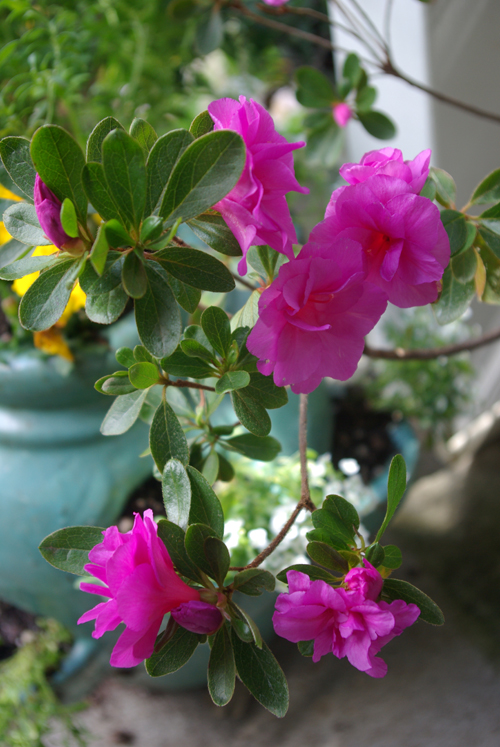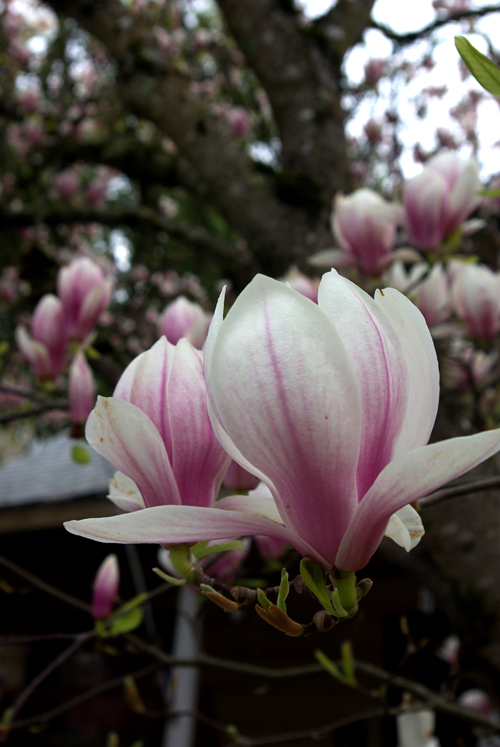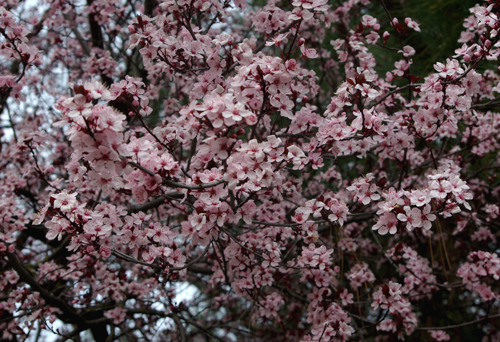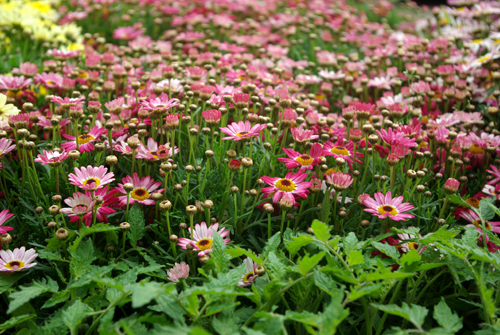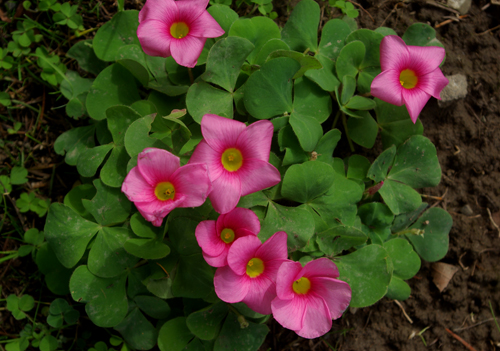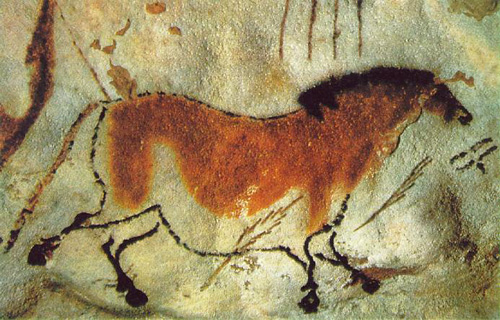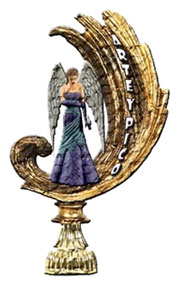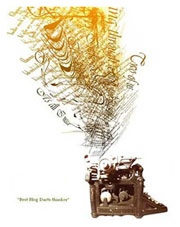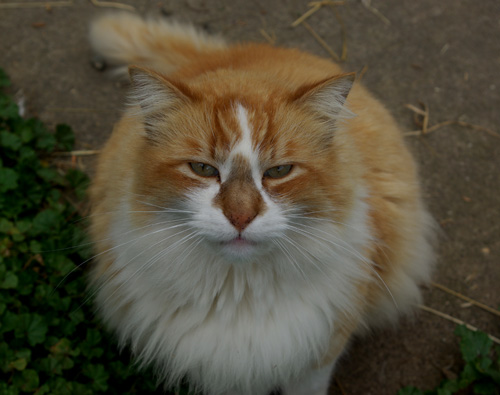
This adorable creature, aptly named Gabby, accompanied me yesterday on a delightful trek around Gabby’s pastures, where a group of friendly farm animals live under the care and guidance of a lovely woman named Dotty. (I am in love with this cat.) As we wandered about the three acres of property Gabby would meander up to each place we stopped and give her version of who I was meeting. I found this very endearing.
How I came to be at the Friendly Farm Foundation on a grey winter day was that I became intrigued with a professionally painted sign in the back window of a vehicle just in front of mine recently. So intrigued, in fact, that I followed the vehicle into a parking lot, parked and jumped out to inquire of the emerging driver to please tell me what the Friendly Farm Foundation is! Dotty kindly took the time to explain that she owns a number of farm animals she takes around to schools, fairs and nursing homes so that folks who might not otherwise have access to meeting and learning about farm animals (that would be me, actually) have the wonderful opportunity to do so. While folks are not encouraged to hold the animals, they are encouraged to pet them. This entire concept captured my heart and imagination, so yesterday I rang and arranged for the tour. Here are the enchanting animals I met.
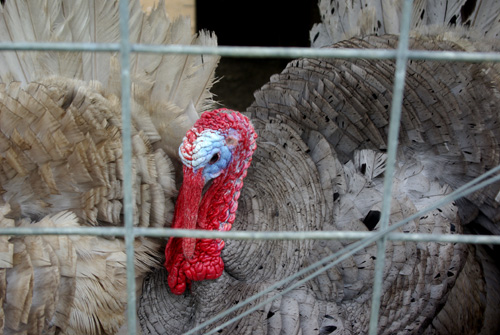
This is either Tom standing next to Tim or Tim standing next to Tom. He is a slate grey turkey, and immediately spread his tail feathers and ruffled them in my direction. “Should I be flattered?” I asked Dotty. He was cute. I had never seen a turkey with this coloration before. Have you? I’m used to wild turkeys.
Next to the turkey cage were the Shetland geese, Amos and Andy. Lots of boys.
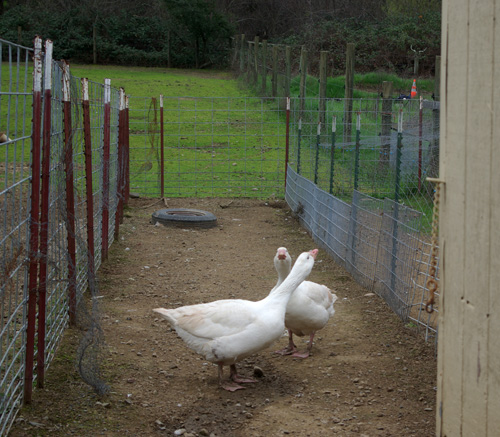
I loved that all the animals had their own spacious living quarters, with sheds and lean-to’s to protect them from the elements. Every pen was clean and comfy.
Living next to the geese were the donkeys. (Imagine the cacophony of the sounds that emanate from cage to cage!) They were curious as donkeys tend to be and I found them very sweet as well.
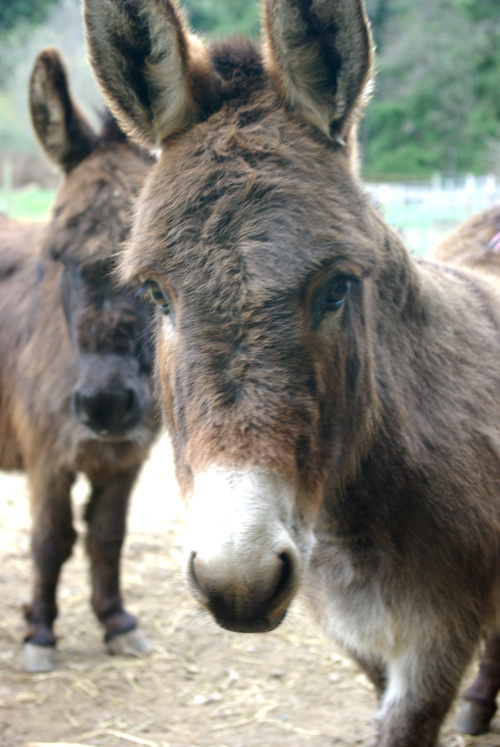
Hello, sweetheart.
My next encounter was with this sheep, who has a face quite unlike sheep I’ve met before. He reminded me of a koala bear. Don’t you think?
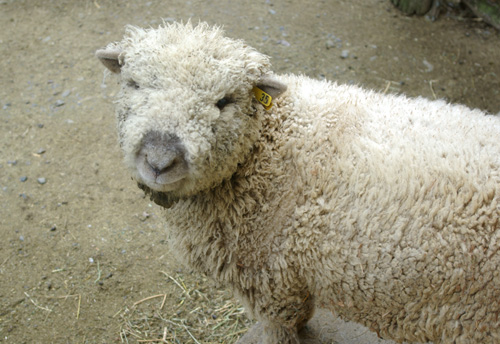
Just beyond the sheep, who apparently had been “playing with the chickens” just prior to my arrival–wish I’d seen that!–were the pygmy goats!
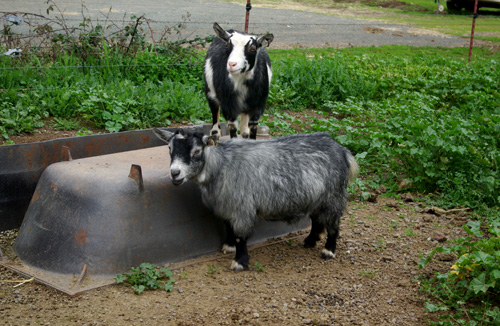
Surprise, surprise! They are both pregnant. It takes five months for a goat to come to full term. Wow. All the goats I’ve met in the past were rather nosey. But this pair of friends were very respectful of my space as I was of theirs, even though I did enter their pen, once Dotty had reassured me they would not be butting or nosing me. Dotty clearly has carefully chosen the animals she introduces to the public.
We made our way through a large area that housed many kinds of hens and roosters. (Five roosters!) Rest assured I inquired whether any of the roosters were aggressive, not being naive to that possibility, but true to her word, all the roosters graciously allowed me to pass through unmolested. I was charmed to see a small grey hen moving quickly under the bushes with a tiny posse of babies trailing behind her, following her into the thicket, safely out of sight. These guys all made it into the lens of my camera, however.
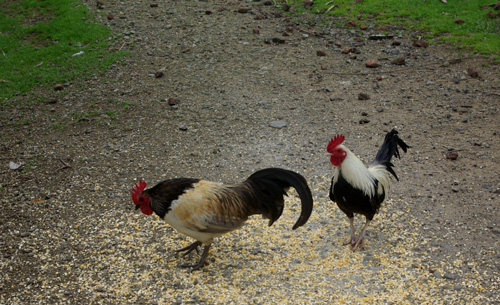
These chickens remind me of some old Renaissance painting. Aren’t they beautiful?
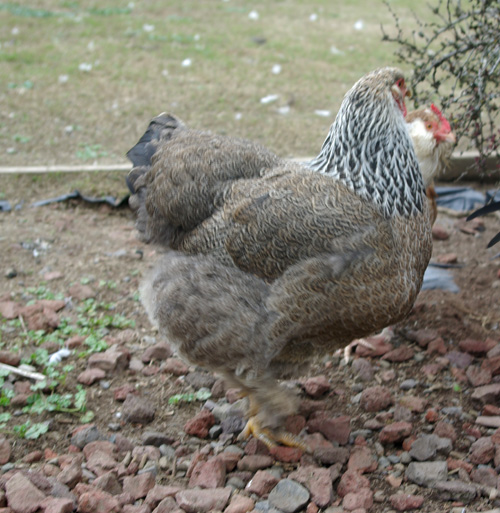
This hen captured my attention for the intricate designs in her muted feathers. I’ve never seen a hen who looked like this before.
And look at this stunning fellow, a Black Brahma!
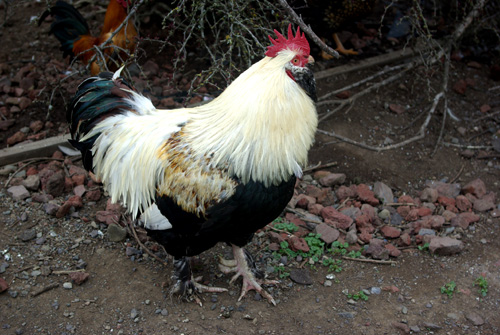
On the far side of the chicken yard was a large pen housing two very large cows. I was told they are Pinzgauers, which is a new name to me. They were both very imposing, but docile. This one is (strangely) named Shorty, and I learned that she, too, is very pregnant!
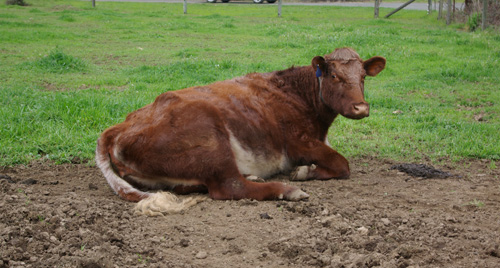
Dotty, who has been raising farm animals her entire life, informed me that she has helped deliver hundreds of sheep and cows and goats. I’m trying to imagine what my life would seem like if I had that under my belt. She is one of the earthy, practical, amazing women who can midwife birth, even difficult births. I am in awe of such women.
Rounding out the tour we passed back through the barn where two lovely soft rabbits live, named Bunny Foo, a mini-Rex and Boscoe Bunny, a mini-Lop. Here they are.
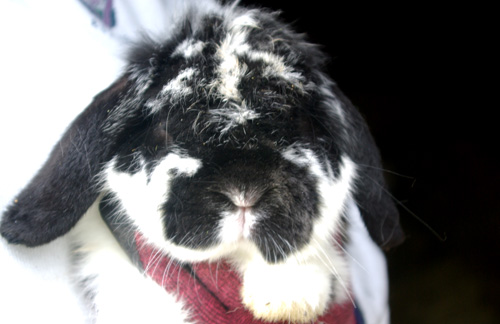
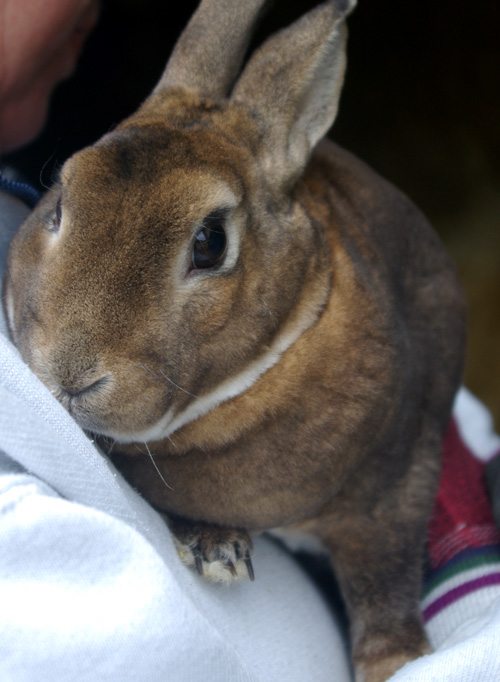
This is the softest animal I have ever touched in my whole life. Delicious experience!
As we stepped outside the barn Dotty introduced me to the trailer into which all these animals get loaded up to make their trips out into the world, introducing people of all ages to the lovelihood that is all things animal. Quite amazing, actually. I am curious and fascinated that the destiny of this particular group of animals is to bring joy and comfort to people. Domestication is a long road I do not take for granted.
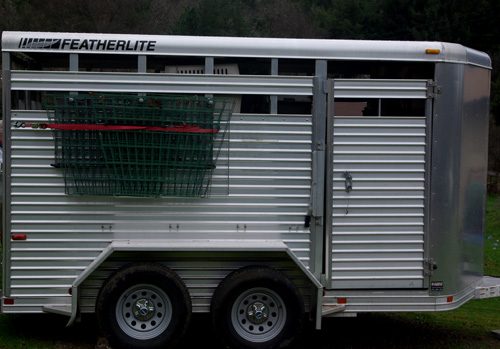

Ending my tour where I began, I bade farewell to the companionable dear Gabby and her Mommie, the very hospitable Dotty. Thank you so very much for the most delightful winter day!
Love and animal blessings,
Kathryn xoxoxo
Posted on February 21st, 2010 by Kathryn
Filed under: Animals | 22 Comments »
